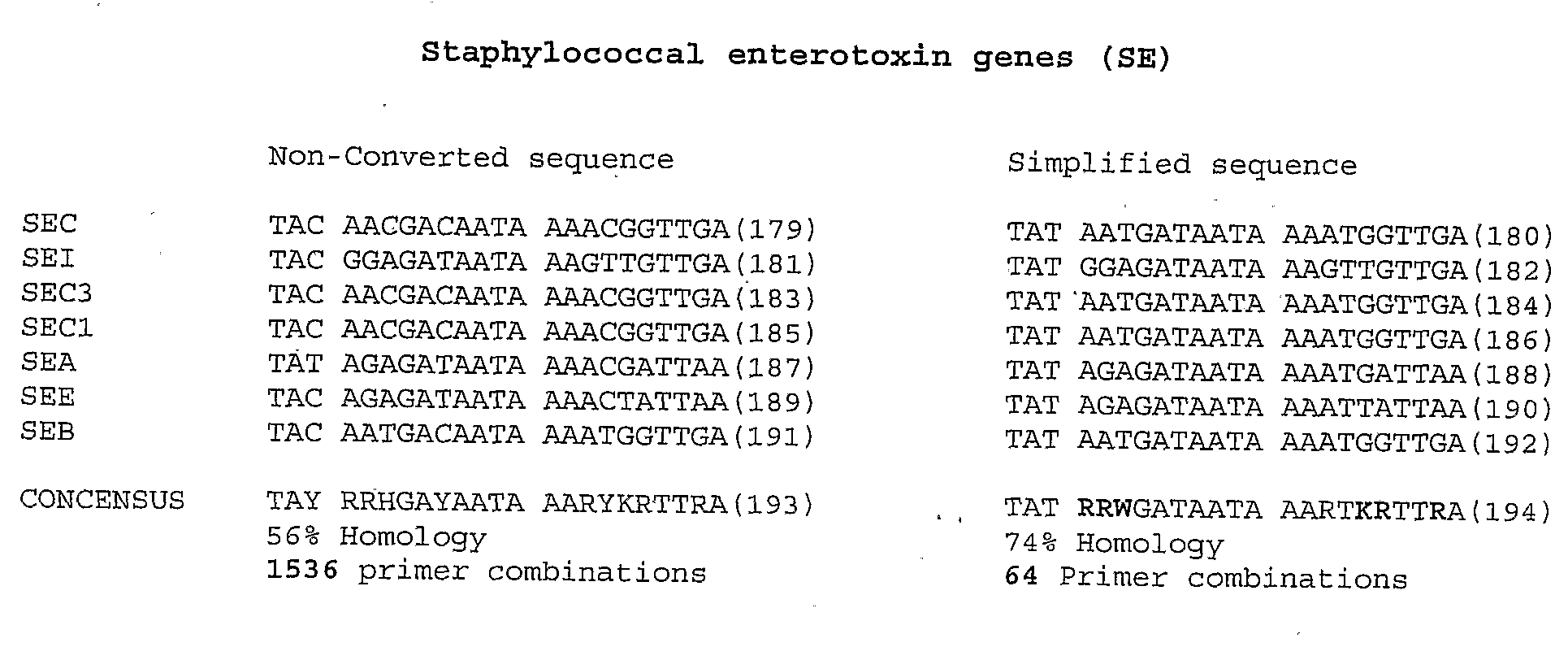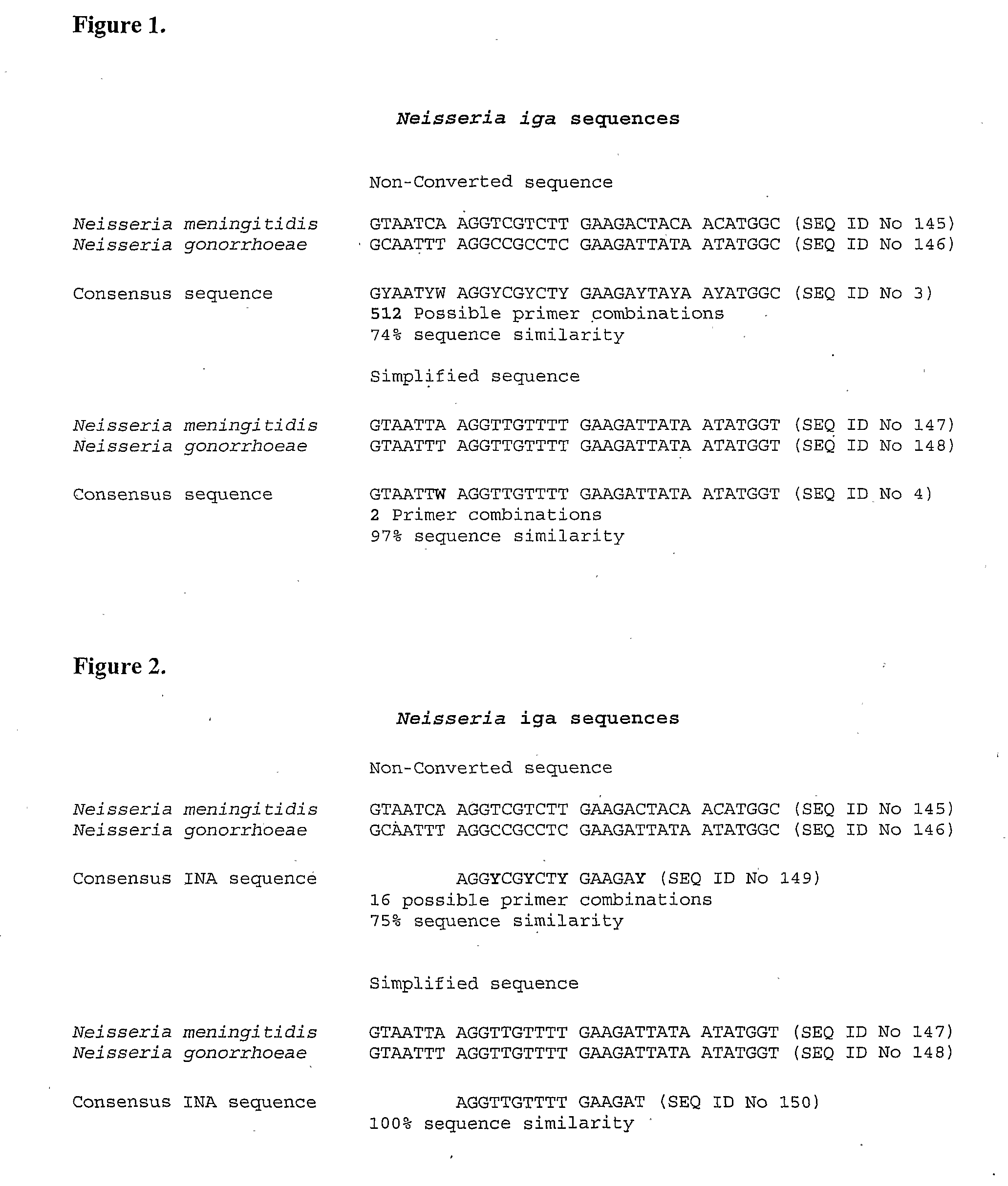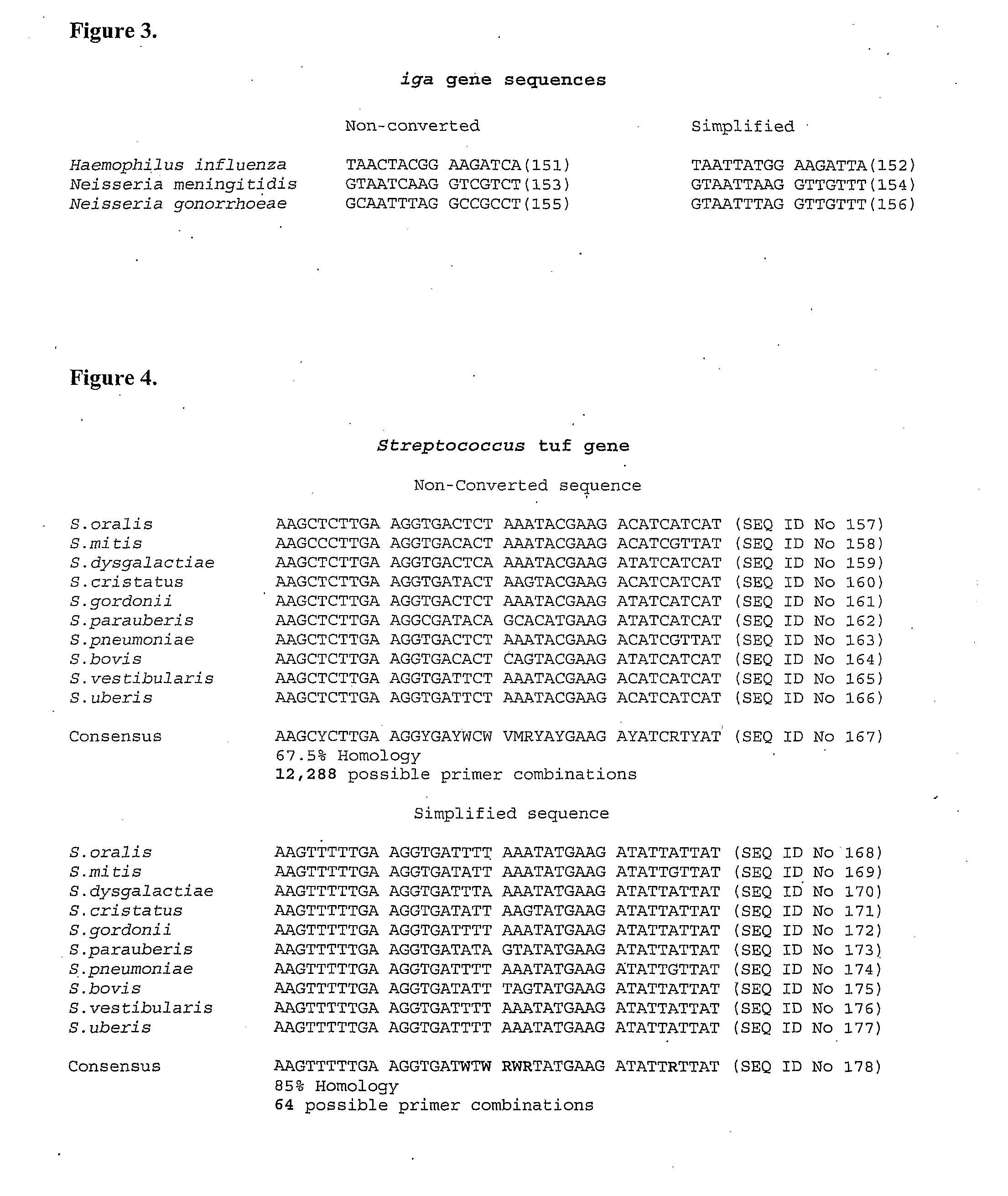Methods for simplifying microbial nucleic acids by chemical modification of cytosines
a technology of cytosine and cytosine, which is applied in the field of nucleic acid detection assays, can solve the problems of limiting the usefulness of such approaches, further damage to the dna, and loss of amplification signals
- Summary
- Abstract
- Description
- Claims
- Application Information
AI Technical Summary
Benefits of technology
Problems solved by technology
Method used
Image
Examples
Embodiment Construction
Definitions
[0105]The term “genomic simplification” as used herein means the genomic (or other) nucleic acid is modified from being comprised of four bases adenine (A), guanine (G), thymine (T) and cytosine (C) to substantially containing the bases adenine (A), guanine (G), thymine (T) but still having substantially the same total number of bases.
[0106]The term “derivative nucleic acid” as used herein means a nucleic acid that substantially contains the bases A, G, T and U (or some other non-A, G or T base or base-like entity) and has substantially the same total number of bases as the corresponding unmodified microbial nucleic acid. Substantially all cytosines in the microbial DNA will have been converted to uracil during treatment with the agent. It will be appreciated that altered cytosines, such as by methylation, may not necessarily be converted to uracil (or some other non-A, G or T base or base-like entity). As microbial nucleic acid typically does not contain methylated cytos...
PUM
| Property | Measurement | Unit |
|---|---|---|
| pH | aaaaa | aaaaa |
| pH | aaaaa | aaaaa |
| pH | aaaaa | aaaaa |
Abstract
Description
Claims
Application Information
 Login to View More
Login to View More - R&D
- Intellectual Property
- Life Sciences
- Materials
- Tech Scout
- Unparalleled Data Quality
- Higher Quality Content
- 60% Fewer Hallucinations
Browse by: Latest US Patents, China's latest patents, Technical Efficacy Thesaurus, Application Domain, Technology Topic, Popular Technical Reports.
© 2025 PatSnap. All rights reserved.Legal|Privacy policy|Modern Slavery Act Transparency Statement|Sitemap|About US| Contact US: help@patsnap.com



